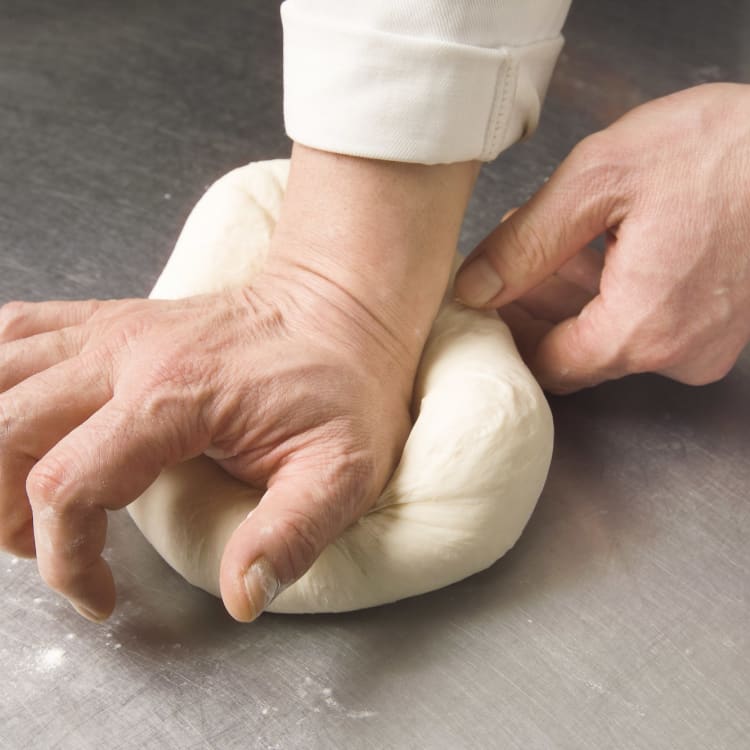
Story
Slurping a beloved Japanese cuisine
Japan’s regional udon styles
By JNTO On 24 January 2022
Japan is famous for its cuisine, as well as its huge variety of noodles. The three main types of noodles you can find are ramen, soba, and udon – all of which are made with different ingredients and prepared in very distinct ways.
One of the most popular Japanese noodles is udon, which is paler in colour, chewier, and typically thicker than ramen or soba noodles. Made from wheat flour, water, and salt, it is often rolled out and then cut into noodle shapes. Enjoyed year round, it is frequently served in a simple dashi-based broth and depending on the region, there are variations in the way it is made and served.


When udon was first introduced to Japan, it was believed to have looked closer to a dumpling than noodles. It wasn’t until about the 14th century that udon was cut into long noodle strands that we know today.
Udon serving styles
While the noodles are simple, it is served – and eaten – in a variety of different ways. The name of the dish changes depending on whether the udon is served hot or cold, and what toppings accompany the noodles.
For instance, a plain hot bowl of udon is called kake udon. There is also the tanuki udon (topped with tempura batter crumbs), tsukimi udon (topped with raw egg), yaki udon (stir-fried), and many more.
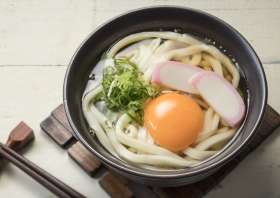
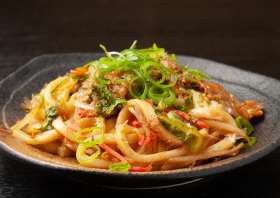
The cold, zaru udon is served in a woven basket, and the noodles are dipped in a tsuyu sauce before eating. Bukkake udon is also served cold, but with toppings and sauce mixed up in a bowl.
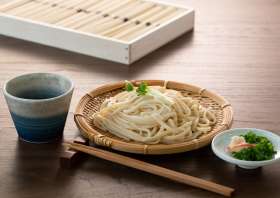
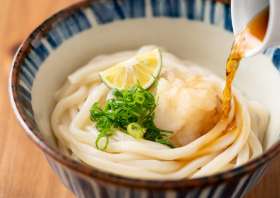
Regional udon
It comes as no surprise that each region in Japan has its own regional udon specialty.
Sanuki Udon (Kagawa Prefecture)
Probably the most famous type of udon in Japan, Sanuki Udon hails from Kagawa Prefecture, which brands itself as the “udon prefecture” because the noodles are found almost everywhere. Udon is so popular here that visitors would tour around the prefecture to try out all kinds of variations – there are even Udon Taxi and Udon Bus services for tourists!
Sanuki Udon is characterised by its flat edges and known for its light chewiness, which makes it easy to slurp. It is also unique in that ginger and scallions are often used as condiments, which are compatible with the iriko (dried sardines) soup stock the noodles are often served in.
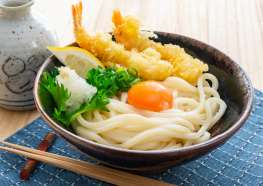

You can try Sanuki Udon in a variety of styles. The most popular in Kagawa is bukkake, which is served in broth with a topping of soft-boiled egg and scallions. The kamaage udon is served with the hot water it was boiled in, while the kamatama udon is served with beaten egg and soy sauce or fish broth.
Inaniwa Udon (Akita Prefecture)
Inaniwa Udon is a signature udon from the Inaniwa area of southern Akita Prefecture. The cream-coloured dried noodles are hand-stretched rather than cut with a knife, like other udon noodles, and are slightly thinner and flatter.
Inaniwa Udon credits its origin to Sato Yosuke, whose hand-stretched noodles first appeared in ancient local texts in 1665 and were widely enjoyed by lords of the Edo era. All Inaniwa Udon noodles are still produced by hand today, made with a unique technique called teyori that involves weaving the strands of noodles around two sticks, and then flattening and stretching them; they are finally left to hang to further elongate.
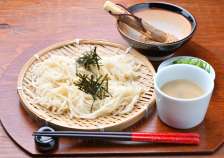

The most common way to enjoy Inaniwa Udon is to have the noodles chilled and then dipped in a small bowl of sauce – either soy or sesame – before eating them. The noodles are also tasty in a hot broth with a subtle flavour so as not to overpower the delicate udon’s flavour.
Goto Udon (Nagasaki Prefecture)
Nagasaki’s Goto Islands is about 100km west of Nagasaki City – among them, Kamigoto and Nakadorijima carry the legacy of Goto Udon. These noodles are made very similarly to Inaniwa Udon in that it is kneaded and thinned by stretching and pulling the strands by hand.
In addition to flour, water, and salt, Goto Udon has an extra ingredient: the Goto islands’ indigenous camellia oil. The oil is used to ensure a certain shelf life, and to smooth out the unevenness in the surface of the dried noodles, making it easy to slurp.
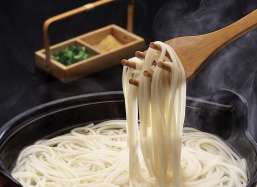

The most famous way to eat the Goto Udon is the jigokudaki (hell boiling) in which a cauldron of boiling water is brought to the table, and the noodles are tossed into the pot to cook. It is a meal best enjoyed in the company of others. The noodles are served with a soy-sauce-based dipping sauce made with ago (flying fish native to the area), and you can add toppings like chopped scallions, bonito flakes, and raw egg.
















































